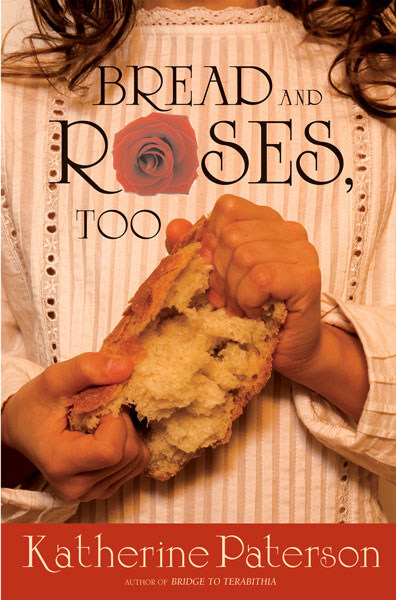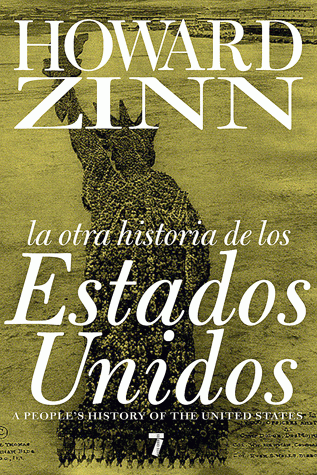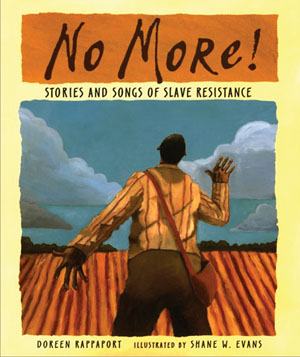Film. By Deb Ellis and Denis Mueller. 2010. 78 minutes.
Documentary on life and work of Howard Zinn.
Continue reading
Book — Non-fiction. By Howard Zinn. 2005, with a new introduction by Anthony Arnove in 2015. 784 pages.
Howard Zinn's groundbreaking work on U.S. history. This book details lives and facts rarely included in textbooks—an indispensable teacher and student resource.
Continue reading
Teaching Activity. By Wayne Au. Rethinking Schools. 7 pages.
How students can use the Black Panther Party's 10-Point Program to assess issues in their own communities and to develop 10-Point Programs of their own. Available in Spanish.
Teaching Activity by Wayne Au
Continue reading
Book — Fiction. By Katherine Paterson. 2006. 275 pages.
Moving young adult historical-fiction novel based on a major strike in Lawrence, Mass., in 1912.
Continue reading
Teaching Guide. By Bill Bigelow and Norm Diamond. 1988. 184 pages.
Role plays and writing activities project high school students into real-life situations to explore the history and contemporary reality of employment (and unemployment) in the U.S.
Continue reading
Book — Fiction. By Shana Burg. 2008. 320 pages.
Set in 1963 Mississippi, this historical fiction introduces middle/high school readers to the life at that time through the experiences of a 12-year-old.
Continue reading
Radio program and podcast.
Daily news radio program, hosted by Amy Goodman and Juan Gonzalez, with voices rarely heard in corporate media.
Continue reading
Teaching Activity. By Bill Bigelow and Norm Diamond.
Role play on the 1912 Bread and Roses strike in Lawrence, Mass.
Continue reading
Booklet and 2-Poster Set. By Howard Zinn and George Kirschner. 2007.
Visual timelines of U.S. history presented thematically and chronologically.
Continue reading
Book — Non-fiction. By Howard Zinn. Translated by Toni Strubel. 2011 (translation). 512 pages.
A People's History of the United States in Spanish.
Continue reading
Film. By Hudson and Houston. Learning for Justice. 2005. 40 minutes.
This Academy Award-winning documentary film tells the heroic story of the young people in Birmingham, Alabama, who brought segregation to its knees.
Continue reading
Film. Produced by Moctesuma Esparza. 2006. 111 minutes.
Walkout tells the true story of the Chicano students of East L.A., who in 1968 staged several dramatic walkouts in their high schools to protest academic prejudice and dire school conditions.
Continue reading
Film. Produced by Judy Richardson and Bestor Cram. 2009. 57 minutes.
A documentary film that brings to light the story of the attack by state police on a demonstration in Orangeburg, South Carolina -- leaving three students killed and 28 injured.
Continue reading
Film. Produced by Dr. Steven Channing. 2004. 61 minutes.
The story surrounding the 1960 Greensboro lunch counter sit-ins.
Continue reading
Film. By Joan Sadoff, Robert Sadoff, and Laura Lipson. 2002. 60 minutes.
Documentary film on women in the Civil Rights Movement in Mississippi.
Continue reading
Film. By Teaching for Change. 2006. 15 minutes.
First grade teacher Maggie Donovan (SNCC veteran) introduces her students to the fight to desegregate the buses, placing Rosa Parks in the context of the larger community efforts.
Continue reading
Film. By David Zeiger. 2005. 84 minutes.
This award-winning film demonstrates the role soldiers and veterans played in the anti-Vietnam War movement.
Continue reading
Book — Non-fiction. By Russell Freedman. 2006. 114 pages.
Written for middle school, the grassroots history of the Montgomery Bus Boycott.
Continue reading
Book — Non-fiction. By Andrea Davis Pinkney. 2013. 120 pages.
Mini-biographies for upper elementary and middle school of 10 African-American women.
Continue reading
Picture book. By Doreen Rappaport. Illustrated by Shane W. Evans. 2005. 64 pages.
Picture book for upper elementary/middle school on the many forms of resistance to slavery.
Continue reading
Teaching Activity. By Gilda L. Ochoa. Rethinking Schools. 5 pages.
Reflections on teaching students about the 1968 walkouts by Chicano students in California.
Continue reading
Teaching Activity. By Bill Bigelow and Norm Diamond. 12 pages.
Role play on farm labor organizing in the 1930s shows how racism had to be challenged to create effective worker alliances.
Continue reading
Teaching Activity. By Dale Weiss. Rethinking Schools. 3 pages.
A teacher's reflections about a curriculum unit on women's rights contextualizes the history of the feminist movement within the broader struggle of people working for greater equality in the United States.
Continue reading
Teaching Activity. By Bill Bigelow. 17 pages.
A role play allows students to examine issues of race and class when exploring both the accomplishments and limitations of the Seneca Falls Convention.
Continue reading
Reading for Teachers. By Bill Bigelow. 7 pages.
Author describes how students applied strategies from the Lawrence strike to their own present day activism.
Continue reading

























